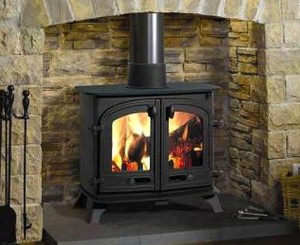Burning any fuel produces carbon monoxide. This means any fuel-burning appliance in your home is a potential source. Poisoning comes from inhaling enough of the gas that it replaces oxygen in the blood.
Gas central heating, space heaters, fireplaces, furnaces, wood burning stoves, and water heaters are all leading sources of carbon monoxide. Carbon monoxide can escape if these devices leak or are poorly vented. Exhaust from a car parked in a closed garage can also be a source.
The Carbon Monoxide and Gas Safety Society says that on average, carbon monoxide poisoning kills 40 people a year and injures around 300. But it believes cases are under reported as there is no automatic testing for CO of people who die suddenly.
Symptoms of carbon monoxide poisoning
The initial symptoms of carbon monoxide poisoning are similar to the flu but without fever. They include:
- Dizziness
- Fatigue
- Headache
- Nausea
- Irregular breathing
If you have any of these symptoms — and if you feel better when you go outside your home but the symptoms reappear once you’re back inside — you may have carbon monoxide poisoning.
If carbon monoxide poisoning is known or suspected:
- Get out of the building or car where the carbon monoxide is present.
- Keep still. (This will conserve oxygen in the blood, which is already at a low level because carbon monoxide has partially replaced it.)
- It is important that you get treated right away. At the hospital, you will probably get oxygen therapy through a mask.
Tips for preventing carbon monoxide poisoning:
- Install at least one smoke alarm and carbon monoxide alarm on every level of your home and near bedrooms. The alarm should meet the latest Underwriters Laboratories (UL) safety standard and comply with local regulations for placement in the home.
- Call a certified professional to inspect, clean, and tune up the central heating system and repair leaks.
- Monitor appliances, chimneys, and vents for visible soot, rust, stains, blockage, or corrosion. Also have them inspected each year. When in use, make sure they vent properly to allow gas to escape from enclosed areas. Don’t close the fireplace or damper before the fire is completely out.
- Open flues when fireplaces are in use.
- Hire a professional to clean your chimney at least once a year.
- Make sure wood burning stoves comply with local regulations and meet current EPA emissions standards.
- Burn only wood and be sure the wood stove is placed on an approved stove board to protect the floor from heat and embers.
- Never use generators indoors or in crawl spaces.
- Use proper fuel in space heaters.
- Use space heaters in well-ventilated areas.
- Don’t use a gas kitchen oven to heat your home. Keep gas appliances properly adjusted and serviced.
- Don’t burn charcoal or use a grill indoors.
- Don’t use paint remover that has methylene chloride in it, especially when children are around. (Methylene chloride converts to carbon monoxide in the body.)

